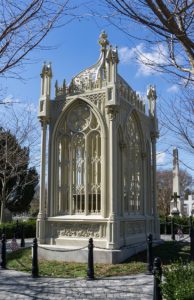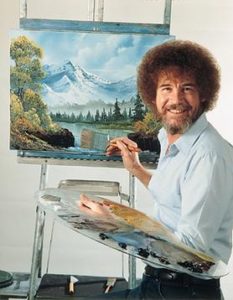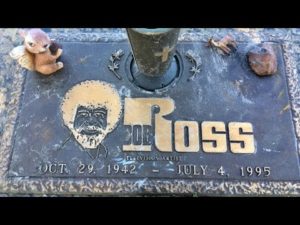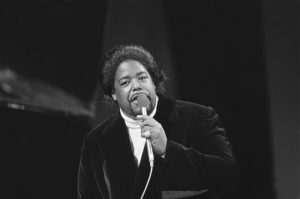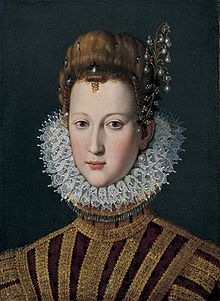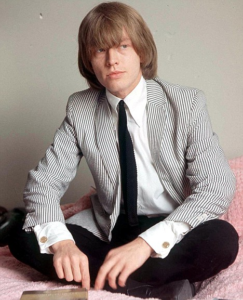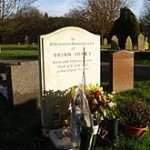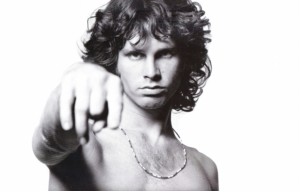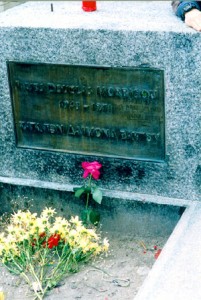
Hamilton portrait by John Trumbull
On this day in 1804, military officer, lawyer, financier, political theorist, economist, philosopher, one of the Founding Fathers of the United States, 1st United States Secretary of the Treasury, Alexander Hamilton died from a gunshot wound suffered in a duel with Vice President Aaron Burr along the west bank of the Hudson River on a rocky ledge in Weehawken, New Jersey, at the age of either 47 or 49. Born 11 January in 1755 or 1757 in Charlestown, the capital of the island of Nevis, in the Caribbean Sea; Nevis was then one of the British West Indies.
He was an influential interpreter and promoter of the U.S. Constitution, as well as the founder of the nation’s financial system, the Federalist Party, the United States Coast Guard, and the New York Post newspaper. As the first Secretary of the Treasury, Hamilton was the main author of the economic policies of George Washington’s administration. He took the lead in the Federal government’s funding of the states’ debts, as well as establishing the nation’s first two de facto central banks, the Bank of North America and the First Bank of the United States, a system of tariffs, and friendly trade relations with Britain. His vision included a strong central government led by a vigorous executive branch, a strong commercial economy, government-controlled banks, support for manufacturing, and a strong military.
Hamilton was born out of wedlock. He was orphaned as a child and taken in by a prosperous merchant. When he reached his teens, he was sent to New York to pursue his education. He took an early role in the militia as the American Revolutionary War began. In 1777, he became a senior aide to General Washington in running the new Continental Army. After the war, he was elected as a representative from New York to the Congress of the Confederation. He resigned to practice law and founded the Bank of New York before entering politics. Hamilton was a leader in seeking to replace the weak confederal government under the Articles of Confederation; he led the Annapolis Convention of 1786, which spurred Congress to call a Constitutional Convention in Philadelphia. He helped ratify the Constitution by writing 51 of the 85 installments of The Federalist Papers, which are still used as one of the most important references for Constitutional interpretation.
Hamilton led the Treasury Department as a trusted member of President Washington’s first Cabinet. Hamilton successfully argued that the implied powers of the Constitution provided the legal authority to fund the national debt, to assume states’ debts, and to create the government-backed Bank of the United States (the First Bank of the United States). These programs were funded primarily by a tariff on imports, and later by a controversial whiskey tax. He opposed friendly relations with the French revolutionaries. Hamilton’s views became the basis for the Federalist Party, which was opposed to the Democratic-Republican Party led by Thomas Jefferson and James Madison. In 1795, he returned to the practice of law in New York. He called for mobilization against the French First Republic in 1798–99 under President John Adams, and became Commanding General of the U.S. Army, which he reconstituted, modernized, and readied for war. The army did not see combat in the Quasi-War, and Hamilton was outraged by Adams’ diplomatic approach to the crisis with France. His opposition to Adams’ re-election helped cause the Federalist party defeat in 1800. Jefferson and Aaron Burr tied for the presidency in the electoral college, and Hamilton helped to defeat Burr, whom he found unprincipled, and to elect Jefferson despite philosophical differences.
Hamilton continued his legal and business activities in New York City, and was active in ending the legality of the international slave trade. Vice President Burr ran for governor of New York State in 1804, and Hamilton campaigned against him as unworthy. Taking offense, Burr challenged him to a duel on July 11, 1804, in which Burr shot and mortally wounded Hamilton. Hamilton is generally regarded as an astute and intellectually brilliant politician and financier, if often impetuous. His ideas are credited with laying the foundation for American government and finance.
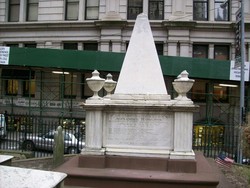 The Final Footprint – Hamilton is entombed in a marble tomb in the graveyard of Trinity Church at Wall Street and Broadway in Lower Manhattan. His epitaph reads; The PATRIOT of incorruptible INTEGRITY. The SOLDIER of approved VALOUR. The STATESMAN of consummate WISDOM; Whose TALENTS and VIRTUES will be admired Grateful Posterity. Long after this MARBLE shall have mouldered into DUST.
The Final Footprint – Hamilton is entombed in a marble tomb in the graveyard of Trinity Church at Wall Street and Broadway in Lower Manhattan. His epitaph reads; The PATRIOT of incorruptible INTEGRITY. The SOLDIER of approved VALOUR. The STATESMAN of consummate WISDOM; Whose TALENTS and VIRTUES will be admired Grateful Posterity. Long after this MARBLE shall have mouldered into DUST.
#RIP #OTD in 1926, writer, traveller, political officer, administrator, and archaeologist Gertrude Bell died in Baghdad of an apparent overdose of sleeping pills at the age of 57. British cemetery in Baghdad’s Bab al-Sharji district
#RIP #OTD in 1935 French artillery officer of Jewish ancestry whose trial and conviction in 1894 on charges of treason became one of the most polarizing political dramas in modern French history, Alfred Dreyfus died in Paris aged 75. Cimetière du Montparnasse, Paris
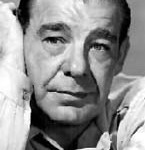 On this day in 1973, the son of famous silent film actor, Lon Chaney, actor Lon Chaney, Jr. died of heart failure at age 67 in San Clemente, California. Born Creighton Tull Chaney on 10 February 1906 in Oklahoma City. Perhaps best known for playing such characters as The Wolf Man, The Mummy, Frankenstein’s Monster and Count Alucard for Universal. He is also notable for portraying Lennie Small in Of Mice and Men. From Warren Zevon’s song “Werewolves of London”; Well, I saw Lon Chaney walking with the Queen, / Doing the Werewolves of London / I saw Lon Chaney, Jr. walking with the Queen / Doing the Werewolves of London.
On this day in 1973, the son of famous silent film actor, Lon Chaney, actor Lon Chaney, Jr. died of heart failure at age 67 in San Clemente, California. Born Creighton Tull Chaney on 10 February 1906 in Oklahoma City. Perhaps best known for playing such characters as The Wolf Man, The Mummy, Frankenstein’s Monster and Count Alucard for Universal. He is also notable for portraying Lennie Small in Of Mice and Men. From Warren Zevon’s song “Werewolves of London”; Well, I saw Lon Chaney walking with the Queen, / Doing the Werewolves of London / I saw Lon Chaney, Jr. walking with the Queen / Doing the Werewolves of London.
The Final Footprint – His body was donated for medical research. Chaney’s corpse was dissected by medical students, and the medical school kept his liver and lungs in jars as specimens of what extreme alcohol and tobacco abuse can do to human organs. There is no grave to mark his final resting place.
#RIP #OTD in 1979 singer-songwriter (“Lovin’ You”), the “Queen of the Whistle Register”, Minnie Riperton died from breast cancer at Cedars-Sinai Medical Center in Los Angeles in the arms of her husband Richard Rudolph, aged 31. Westwood Village Memorial Park Cemetery, Los Angeles
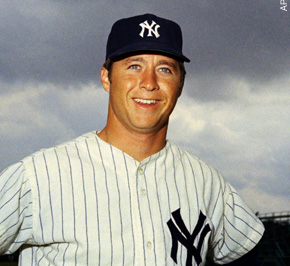 On this day in 2008, baseball player, 5x All-Star, New York Yankee, Bobby Murcer died from brain cancer, surrounded by his family at his home in Oklahoma City at the age of 62. Born Bobby Ray Murcer on 20 May 1946 in Oklahoma City.
On this day in 2008, baseball player, 5x All-Star, New York Yankee, Bobby Murcer died from brain cancer, surrounded by his family at his home in Oklahoma City at the age of 62. Born Bobby Ray Murcer on 20 May 1946 in Oklahoma City.
He played for 17 seasons between 1965 and 1983, mostly with the Yankees, whom he later rejoined as a longtime broadcaster.
Murcer married his high school sweetheart, Diana Kay Rhodes (known as “Kay”), in 1966. They were married for 42 years until his death.
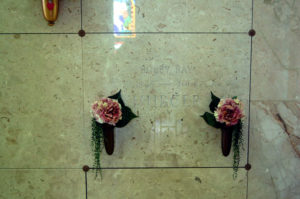 The Final Footprint – Yankees owner George Steinbrenner issued a statement following his death: “Bobby Murcer was a born Yankee, a great guy, very well-liked and a true friend of mine. I extend my deepest sympathies to his wife Kay, their children and grandchildren. I will really miss the guy.” Baseball commissioner Bud Selig eulogized, “All of Major League Baseball is saddened today by the passing of Bobby Murcer, particularly on the eve of this historic All-Star game at Yankee Stadium, a place he called home for so many years. Bobby was a gentleman, a great ambassador for baseball, and a true leader both on and off the field. He was a man of great heart and compassion.” The memorial service for Bobby was held in Edmond, OK on 6 August 2008, at the Memorial Road Church of Christ. Among the some 2,000 attending the memorial were Reggie Jackson, Derek Jeter, Andy Pettitte and Joe Girardi. Also in attendance Diana Munson, widow of Yankee captain Thurman Munson. The August 6 date was 29 years, to the day, since Murcer gave a eulogy at Munson’s funeral and is also the 25th anniversary of Bobby Murcer Day at Yankee Stadium. The uniform worn by Murcer at his final Yankee Stadium Old Timer’s Day appearance in 2007 was presented to his spouse Kay. Murcer is entombed in Rose Hill Mausoleum, in Oklahoma City, in the left side of the building.
The Final Footprint – Yankees owner George Steinbrenner issued a statement following his death: “Bobby Murcer was a born Yankee, a great guy, very well-liked and a true friend of mine. I extend my deepest sympathies to his wife Kay, their children and grandchildren. I will really miss the guy.” Baseball commissioner Bud Selig eulogized, “All of Major League Baseball is saddened today by the passing of Bobby Murcer, particularly on the eve of this historic All-Star game at Yankee Stadium, a place he called home for so many years. Bobby was a gentleman, a great ambassador for baseball, and a true leader both on and off the field. He was a man of great heart and compassion.” The memorial service for Bobby was held in Edmond, OK on 6 August 2008, at the Memorial Road Church of Christ. Among the some 2,000 attending the memorial were Reggie Jackson, Derek Jeter, Andy Pettitte and Joe Girardi. Also in attendance Diana Munson, widow of Yankee captain Thurman Munson. The August 6 date was 29 years, to the day, since Murcer gave a eulogy at Munson’s funeral and is also the 25th anniversary of Bobby Murcer Day at Yankee Stadium. The uniform worn by Murcer at his final Yankee Stadium Old Timer’s Day appearance in 2007 was presented to his spouse Kay. Murcer is entombed in Rose Hill Mausoleum, in Oklahoma City, in the left side of the building.
#RIP #OTD 2020 actress (Mischief, Twins, Jerry Maguire, For Love of the Game, The Experts, Gotti, SpaceCamp, The Cat in the Hat, What a Girl Wants, Sky High, Old Dogs) Kelly Preston died at her home in Clearwater, Florida, from breast cancer, aged 57. Cremation
Have you planned yours yet?
Follow TFF on twitter @RIPTFF

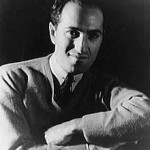 On this day in 1937, composer and pianist, George Gershwin died from a brain tumor at the age of 38 at Cedars Lebanon Hospital in Los Angeles. Born Jacob Gershowitz on 26 September 1898 in Brooklyn. Gershwin’s compositions spanned both popular and classical genres, and his most popular melodies are widely known. Among his best known works are the orchestral compositions Rhapsody in Blue (1924) and An American in Paris (1928), as well as the opera Porgy and Bess (1935). He composed Broadway theatre works with his brother Ira Gershwin and Buddy DeSylva. He moved to Paris to study with Nadia Boulanger, where he began to compose An American in Paris. After returning to New York City, he wrote Porgy and Bess with Ira and the author DuBose Heyward. Porgy and Bess is now considered one of the most important American operas of the twentieth century. Gershwin moved to Hollywood and composed numerous film scores. Gershwin’s compositions have been adapted for use in many films and for television, and several became jazz standards recorded in many variations. Countless celebrated singers and musicians have covered his songs.
On this day in 1937, composer and pianist, George Gershwin died from a brain tumor at the age of 38 at Cedars Lebanon Hospital in Los Angeles. Born Jacob Gershowitz on 26 September 1898 in Brooklyn. Gershwin’s compositions spanned both popular and classical genres, and his most popular melodies are widely known. Among his best known works are the orchestral compositions Rhapsody in Blue (1924) and An American in Paris (1928), as well as the opera Porgy and Bess (1935). He composed Broadway theatre works with his brother Ira Gershwin and Buddy DeSylva. He moved to Paris to study with Nadia Boulanger, where he began to compose An American in Paris. After returning to New York City, he wrote Porgy and Bess with Ira and the author DuBose Heyward. Porgy and Bess is now considered one of the most important American operas of the twentieth century. Gershwin moved to Hollywood and composed numerous film scores. Gershwin’s compositions have been adapted for use in many films and for television, and several became jazz standards recorded in many variations. Countless celebrated singers and musicians have covered his songs.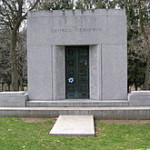 The Final Footprint – Gershwin is entombed in the George Gershwin Private Mausoleum at Westchester Hills Cemetery in Hastings-on-Hudson, New York. His brother Ira was entombed in the mausoleum upon his death, 17 August 1983.
The Final Footprint – Gershwin is entombed in the George Gershwin Private Mausoleum at Westchester Hills Cemetery in Hastings-on-Hudson, New York. His brother Ira was entombed in the mausoleum upon his death, 17 August 1983.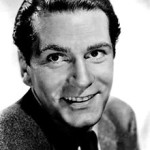 On this day in 1989, actor, director and producer, The Right Honourable, The Lord Olivier, Laurence Olivier died at his home in Steyning, West Sussex, England, from renal failure at the age of 82. Born Laurence Kerr Olivier on 22 May 1907 in Dorking, Surrey, United Kingdom. Olivier became determined early on to master Shakespeare, and eventually came to be regarded as one of the foremost Shakespeare interpreters of the 20th century. His three Shakespeare films as actor-director, Henry V (1944), Hamlet (1948), and Richard III (1955), are among the pinnacles of the Bard at the cinema. Olivier was the youngest actor to be knighted as a Knight Bachelor, in 1947, and the first to be elevated to the peerage two decades later. He married three times, to actresses Jill Esmond (1930 – 1940 divorce), Vivien Leigh (1940 – 1960 divorce) and Joan Plowright (1961 – 1989 his death).
On this day in 1989, actor, director and producer, The Right Honourable, The Lord Olivier, Laurence Olivier died at his home in Steyning, West Sussex, England, from renal failure at the age of 82. Born Laurence Kerr Olivier on 22 May 1907 in Dorking, Surrey, United Kingdom. Olivier became determined early on to master Shakespeare, and eventually came to be regarded as one of the foremost Shakespeare interpreters of the 20th century. His three Shakespeare films as actor-director, Henry V (1944), Hamlet (1948), and Richard III (1955), are among the pinnacles of the Bard at the cinema. Olivier was the youngest actor to be knighted as a Knight Bachelor, in 1947, and the first to be elevated to the peerage two decades later. He married three times, to actresses Jill Esmond (1930 – 1940 divorce), Vivien Leigh (1940 – 1960 divorce) and Joan Plowright (1961 – 1989 his death).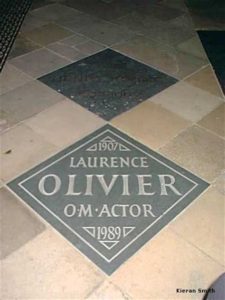 The Final Footprint – He was cremated and his ashes inurned in Poets’ Corner in Westminster Abbey, London. Other notable Final Footprints at Westminster include; Robert Browning, Lord Byron, Geoffrey Chaucer, Charles II, Oliver Cromwell, Charles Darwin, Charles Dickens, Edward III, Edward IV, Edward The Confessor, Elizabeth I, George II, George Friederic Handel, Henry III, Henry V, Henry VII, Stephen Hawking, James VI and I, Samuel Johnson, Ben Jonson, Rudyard Kipling, Henry Wadsworth Longfellow, Mary I, Mary II, Mary Queen of Scots, John Milton, Isaac Newton, Henry Purcell, Richard II, Thomas Shadwell, Edmund Spenser, Lord Alfred Tennyson, Dylan Thomas, and William III.
The Final Footprint – He was cremated and his ashes inurned in Poets’ Corner in Westminster Abbey, London. Other notable Final Footprints at Westminster include; Robert Browning, Lord Byron, Geoffrey Chaucer, Charles II, Oliver Cromwell, Charles Darwin, Charles Dickens, Edward III, Edward IV, Edward The Confessor, Elizabeth I, George II, George Friederic Handel, Henry III, Henry V, Henry VII, Stephen Hawking, James VI and I, Samuel Johnson, Ben Jonson, Rudyard Kipling, Henry Wadsworth Longfellow, Mary I, Mary II, Mary Queen of Scots, John Milton, Isaac Newton, Henry Purcell, Richard II, Thomas Shadwell, Edmund Spenser, Lord Alfred Tennyson, Dylan Thomas, and William III.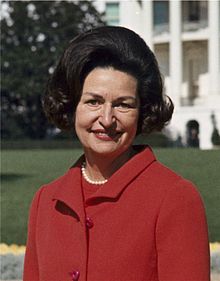
 the United States, entrepreneur, beloved daughter of Texas, Lady Bird Johnson died at her home in West Lake Hills, Texas at the age of 94. Born Claudia Alta Taylor on 22 December 1912 in Karnack, Texas. Throughout her life, she was an advocate for beautification of the nation’s cities and highways and conservation of natural resources and made that her major initiative as First Lady. After first attending the University of Alabama and St. Mary’s junior college in Dallas, she attended the University of Texas at Austin and earned two bachelor’s degrees; in history and journalism, both with honors. On 17 November 1934 she married Lyndon Baines Johnson at St.Mark’s Episcopal Church in San Antonio. They were married until his death in 1973. Lady Bird was instrumental in froming LBJ Holding Company which owned KTBC radio station, KTBC-TV/7, KLBJ-AM, KLBJ-FM and KGSR. Lady Bird was one of the speakers to address the graduates at UT’s Centennial graduation ceremony in May 1983. We wore burnt orange caps and gowns that night. The Goodyear blimp circled the outdoor ceremony. Some of my fondest childhood memories are playing at my cousins’s house in West Lake Hills where Lady Bird would one day own a home.
the United States, entrepreneur, beloved daughter of Texas, Lady Bird Johnson died at her home in West Lake Hills, Texas at the age of 94. Born Claudia Alta Taylor on 22 December 1912 in Karnack, Texas. Throughout her life, she was an advocate for beautification of the nation’s cities and highways and conservation of natural resources and made that her major initiative as First Lady. After first attending the University of Alabama and St. Mary’s junior college in Dallas, she attended the University of Texas at Austin and earned two bachelor’s degrees; in history and journalism, both with honors. On 17 November 1934 she married Lyndon Baines Johnson at St.Mark’s Episcopal Church in San Antonio. They were married until his death in 1973. Lady Bird was instrumental in froming LBJ Holding Company which owned KTBC radio station, KTBC-TV/7, KLBJ-AM, KLBJ-FM and KGSR. Lady Bird was one of the speakers to address the graduates at UT’s Centennial graduation ceremony in May 1983. We wore burnt orange caps and gowns that night. The Goodyear blimp circled the outdoor ceremony. Some of my fondest childhood memories are playing at my cousins’s house in West Lake Hills where Lady Bird would one day own a home.
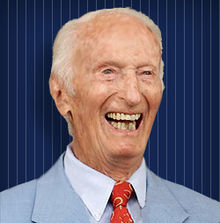 On this day in 2010, United States Navy veteran, public address announcer Bob Sheppard died at his home in Baldwin, New York on July 11, 2010, three months and nine days shy of his 100th birthday. Born Robert Leo Sheppard on 20 October 1910, in Richmond Hill, Queens, New York City. Sheppard was the long-time public address announcer for numerous New York area college and professional sports teams, in particular the MLB New York Yankees (1951–2007), and the NFL New York Giants (1956–2006). Sheppard announced more than 4,500 Yankees baseball games over a period of 56 years, including 22 pennant-winning seasons and 13 World Series championships; he called 121 consecutive postseason contests, 62 games in 22 World Series, and six no-hitters, including three perfect games. Sheppard was also the in-house voice for a half-century of Giants football games, encompassing nine conference championships, three NFL championships (1956, 1986, 1990), and the game often called “the greatest ever played”, the classic 1958 championship loss to Baltimore. His smooth, distinctive baritone and precise, consistent elocution became iconic aural symbols of both the old Yankee Stadium and Giants Stadium. Reggie Jackson famously nicknamed him “The Voice of God”, while Carl Yastrzemski once said, “You’re not in the big leagues until Bob Sheppard announces your name.”
On this day in 2010, United States Navy veteran, public address announcer Bob Sheppard died at his home in Baldwin, New York on July 11, 2010, three months and nine days shy of his 100th birthday. Born Robert Leo Sheppard on 20 October 1910, in Richmond Hill, Queens, New York City. Sheppard was the long-time public address announcer for numerous New York area college and professional sports teams, in particular the MLB New York Yankees (1951–2007), and the NFL New York Giants (1956–2006). Sheppard announced more than 4,500 Yankees baseball games over a period of 56 years, including 22 pennant-winning seasons and 13 World Series championships; he called 121 consecutive postseason contests, 62 games in 22 World Series, and six no-hitters, including three perfect games. Sheppard was also the in-house voice for a half-century of Giants football games, encompassing nine conference championships, three NFL championships (1956, 1986, 1990), and the game often called “the greatest ever played”, the classic 1958 championship loss to Baltimore. His smooth, distinctive baritone and precise, consistent elocution became iconic aural symbols of both the old Yankee Stadium and Giants Stadium. Reggie Jackson famously nicknamed him “The Voice of God”, while Carl Yastrzemski once said, “You’re not in the big leagues until Bob Sheppard announces your name.”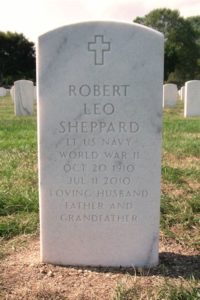 The Final Footprint – Sheppard was interred in Long Island National Cemetery, Farmingdale, New York. In announcing his father’s death, Sheppard’s son Paul said, “I know St. Peter will now recruit him. If you’re lucky enough to go to Heaven, you’ll be greeted by a voice saying, ‘Good afternoon, ladies and gentlemen. Welcome to Heaven!” In 2008, Derek Jeter asked Sheppard to record his at-bat introductions. The recordings have been used to introduce each of Jeter’s home at-bats since the beginning of the 2008 season, and will continue to do so for the rest of his Yankee career. Sheppard said: “It has been one of the greatest compliments I have received in my career of announcing. The fact that he wanted my voice every time he came to bat is a credit to his good judgment and my humility.” A recording of Sheppard was also used to introduce Jeter at the 2010 All-Star Game in Anaheim two days after Sheppard’s death. The Yankees wore a Bob Sheppard commemorative patch on the left sleeve of their home and road jerseys for the remainder of the 2010 season. The Yankees’ first home game after Sheppard’s death, a 5–4 victory over the Tampa Bay Rays on 16 July 2010, was played with an empty PA booth and no public address announcements. On 26 September 2013 a recording of Sheppard’s introduction, followed by Metallica’s “Enter Sandman”, was played as Mariano Rivera stepped to the mound at Yankee Stadium for the final time.
The Final Footprint – Sheppard was interred in Long Island National Cemetery, Farmingdale, New York. In announcing his father’s death, Sheppard’s son Paul said, “I know St. Peter will now recruit him. If you’re lucky enough to go to Heaven, you’ll be greeted by a voice saying, ‘Good afternoon, ladies and gentlemen. Welcome to Heaven!” In 2008, Derek Jeter asked Sheppard to record his at-bat introductions. The recordings have been used to introduce each of Jeter’s home at-bats since the beginning of the 2008 season, and will continue to do so for the rest of his Yankee career. Sheppard said: “It has been one of the greatest compliments I have received in my career of announcing. The fact that he wanted my voice every time he came to bat is a credit to his good judgment and my humility.” A recording of Sheppard was also used to introduce Jeter at the 2010 All-Star Game in Anaheim two days after Sheppard’s death. The Yankees wore a Bob Sheppard commemorative patch on the left sleeve of their home and road jerseys for the remainder of the 2010 season. The Yankees’ first home game after Sheppard’s death, a 5–4 victory over the Tampa Bay Rays on 16 July 2010, was played with an empty PA booth and no public address announcements. On 26 September 2013 a recording of Sheppard’s introduction, followed by Metallica’s “Enter Sandman”, was played as Mariano Rivera stepped to the mound at Yankee Stadium for the final time. 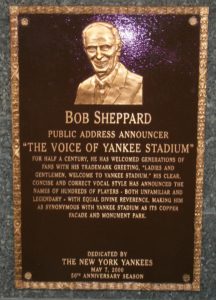 The Yankees dedicated a plaque in his memory for Monument Park at Yankee Stadium. Monument Park is an open-air museum containing a collection of monuments, plaques, and retired numbers honoring distinguished members of the Yankees. Other notable Yankees whose final footprints include memorialization in Monument Park; Mel Allen, Lou Gehrig, Joe DiMaggio, Babe Ruth, George Steinbrenner, Roger Maris, Thurman Munson, Mickey Mantle, Roger Maris, Phil Rizzuto, Billy Martin, and Casey Stengel.
The Yankees dedicated a plaque in his memory for Monument Park at Yankee Stadium. Monument Park is an open-air museum containing a collection of monuments, plaques, and retired numbers honoring distinguished members of the Yankees. Other notable Yankees whose final footprints include memorialization in Monument Park; Mel Allen, Lou Gehrig, Joe DiMaggio, Babe Ruth, George Steinbrenner, Roger Maris, Thurman Munson, Mickey Mantle, Roger Maris, Phil Rizzuto, Billy Martin, and Casey Stengel.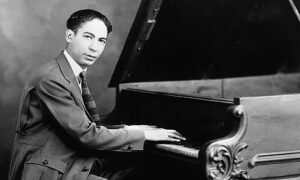
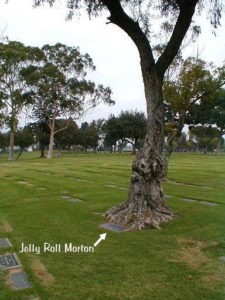
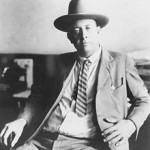
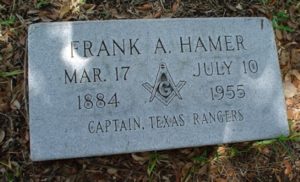
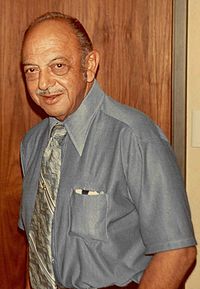
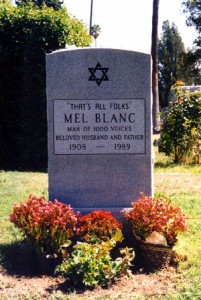
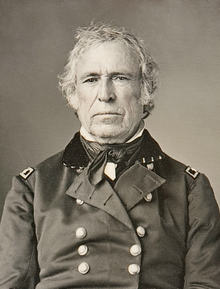
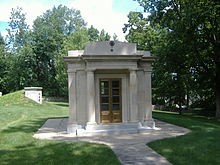
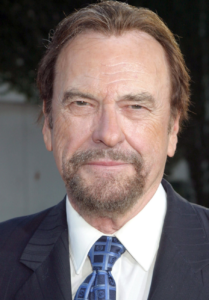

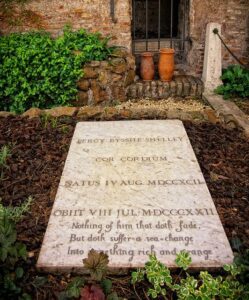
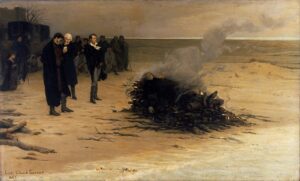
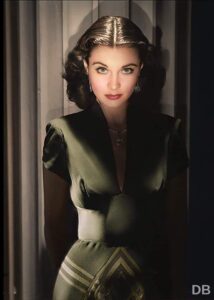
 The Final Footprint – Leigh was cremated at the Golders Green Crematorium in London and her cremains were scattered on the lake at her home, Tickerage Mill, near Blackboys, East Sussex, England. A memorial service was held at St Martin-in-the-Fields, with a final tribute read by actor John Gielgud. GGC was the first crematorium to be opened in London, and one of the oldest crematoria in Britain. The crematorium, the Philipson Family mausoleum, designed by Edwin Lutyens, the wall, along with memorials and gates, the Martin Smith Mausoleum, and Into The Silent Land statue are all Grade II listed buildings. The gardens are included in the National Register of Historic Parks and Gardens. GGC is in Hoop Lane, off Finchley Road, Golders Green, London NW11, ten minutes’ walk from Golders Green tube station. It is directly opposite the Golders Green Jewish Cemetery. The crematorium is secular, accepts all faiths and non-believers; clients may arrange their own type of service or remembrance event and choose whatever music they wish. Other notable cremations at GGC include; Kingsley Amis, Neville Chamberlain, T. S. Eliot, Sigmund Freud, Henry James, Rudyard Kipling, Keith Moon, Peter Sellers, Bram Stoker, H. G. Wells, and Amy Winehouse.
The Final Footprint – Leigh was cremated at the Golders Green Crematorium in London and her cremains were scattered on the lake at her home, Tickerage Mill, near Blackboys, East Sussex, England. A memorial service was held at St Martin-in-the-Fields, with a final tribute read by actor John Gielgud. GGC was the first crematorium to be opened in London, and one of the oldest crematoria in Britain. The crematorium, the Philipson Family mausoleum, designed by Edwin Lutyens, the wall, along with memorials and gates, the Martin Smith Mausoleum, and Into The Silent Land statue are all Grade II listed buildings. The gardens are included in the National Register of Historic Parks and Gardens. GGC is in Hoop Lane, off Finchley Road, Golders Green, London NW11, ten minutes’ walk from Golders Green tube station. It is directly opposite the Golders Green Jewish Cemetery. The crematorium is secular, accepts all faiths and non-believers; clients may arrange their own type of service or remembrance event and choose whatever music they wish. Other notable cremations at GGC include; Kingsley Amis, Neville Chamberlain, T. S. Eliot, Sigmund Freud, Henry James, Rudyard Kipling, Keith Moon, Peter Sellers, Bram Stoker, H. G. Wells, and Amy Winehouse.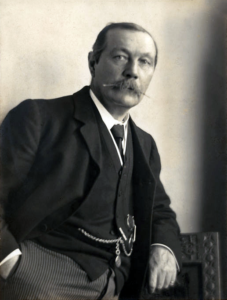
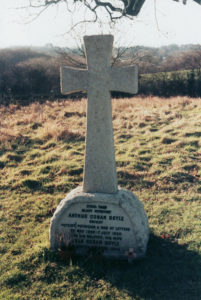
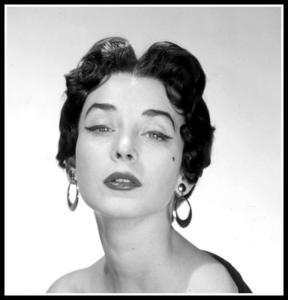
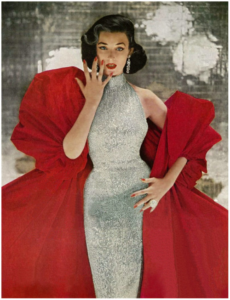
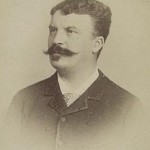
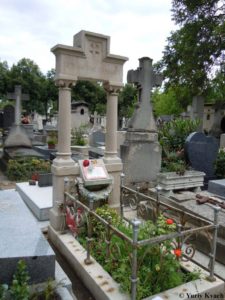
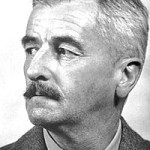
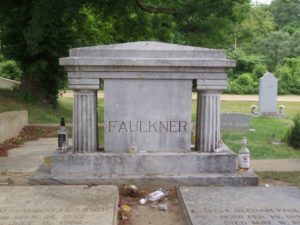
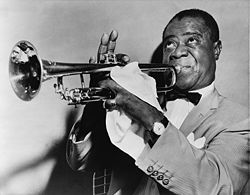
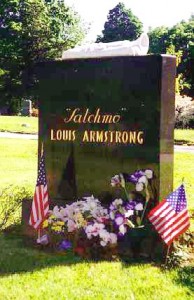
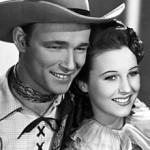
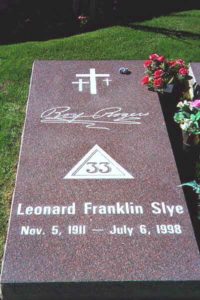
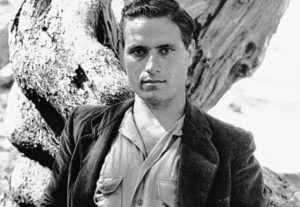
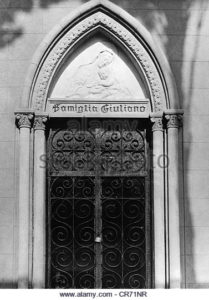
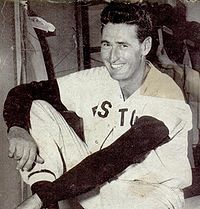

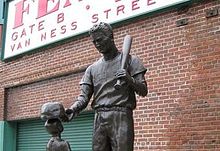

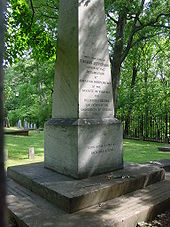 The Final Footprint – Jefferson is interred in the family cemetery at Monticello. His grave is marked by a large upright stone monument. Jefferson wrote his own epitaph, which reads:
The Final Footprint – Jefferson is interred in the family cemetery at Monticello. His grave is marked by a large upright stone monument. Jefferson wrote his own epitaph, which reads: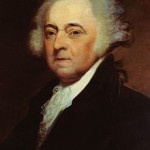 On this day in 1826, the 50th anniversary of the adoption of the Declaration of Independence, the 2nd president of the United States (1797–1801), the first vice president of the United States, an American Founding Father, statesman, diplomat, father of John Quincy Adams (the 6th President of the United States), John Adams died at his home in Quincy, Massachusetts at the age of 90. Born on 30 October 1735, in what is now Quincy, Massachusetts (then called the “north precinct” of Braintree, Massachusetts). A leading advocate of American independence from Great Britain. Well educated, he was an Enlightenment political theorist who promoted republicanism and wrote prolifically about his often seminal ideas, both in published works and in letters to his wife and key adviser Abigail Adams, as well as to other Founding Fathers. Adams came to prominence in the early stages of the American Revolution. A lawyer and public figure in Boston, as a delegate from Massachusetts to the Continental Congress, he played a leading role in persuading Congress to declare independence. He assisted Thomas Jefferson in drafting the Declaration of Independence in 1776, and was its primary advocate in the Congress. Later, as a diplomat in Europe, he helped negotiate the eventual peace treaty with Great Britain, and was responsible for obtaining vital governmental loans from Amsterdam bankers. A political theorist and historian, Adams largely wrote the Massachusetts Constitution in 1780, which together with his earlier Thoughts on Government, influenced American political thought. One of his greatest roles was as a judge of character: in 1775, he nominated George Washington to be commander-in-chief, and 25 years later nominated John Marshall to be Chief Justice of the United States.
On this day in 1826, the 50th anniversary of the adoption of the Declaration of Independence, the 2nd president of the United States (1797–1801), the first vice president of the United States, an American Founding Father, statesman, diplomat, father of John Quincy Adams (the 6th President of the United States), John Adams died at his home in Quincy, Massachusetts at the age of 90. Born on 30 October 1735, in what is now Quincy, Massachusetts (then called the “north precinct” of Braintree, Massachusetts). A leading advocate of American independence from Great Britain. Well educated, he was an Enlightenment political theorist who promoted republicanism and wrote prolifically about his often seminal ideas, both in published works and in letters to his wife and key adviser Abigail Adams, as well as to other Founding Fathers. Adams came to prominence in the early stages of the American Revolution. A lawyer and public figure in Boston, as a delegate from Massachusetts to the Continental Congress, he played a leading role in persuading Congress to declare independence. He assisted Thomas Jefferson in drafting the Declaration of Independence in 1776, and was its primary advocate in the Congress. Later, as a diplomat in Europe, he helped negotiate the eventual peace treaty with Great Britain, and was responsible for obtaining vital governmental loans from Amsterdam bankers. A political theorist and historian, Adams largely wrote the Massachusetts Constitution in 1780, which together with his earlier Thoughts on Government, influenced American political thought. One of his greatest roles was as a judge of character: in 1775, he nominated George Washington to be commander-in-chief, and 25 years later nominated John Marshall to be Chief Justice of the United States.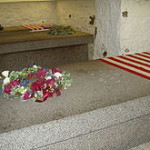 The Final Footprint – Told that it was the Fourth, he answered clearly, “It is a great day. It is a good day.” His last words have been reported as “Thomas Jefferson survives” (Jefferson himself, however, had died hours before Adams did). Adams is entombed at United First Parish Church (also known as the Church of the Presidents) in Quincy. Originally, he was buried in Hancock Cemetery, across the road from the Church.
The Final Footprint – Told that it was the Fourth, he answered clearly, “It is a great day. It is a good day.” His last words have been reported as “Thomas Jefferson survives” (Jefferson himself, however, had died hours before Adams did). Adams is entombed at United First Parish Church (also known as the Church of the Presidents) in Quincy. Originally, he was buried in Hancock Cemetery, across the road from the Church.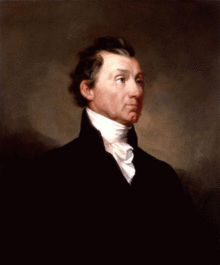 On this day in 1831, 12th and 16th Governor of Virginia, 7th United States Secretary of State, the fifth President of the United States (1817–1825), the last president who was a Founding Father of the United States, the third of them to die on Independence Day, and the last president from the Virginia dynasty and the Republican Generation, James Monroe died at his daughters home in New York City from heart failure and tuberculosis at the age of 73. Born on 28 April 1758, in his parents’ house located in a wooded area of Westmoreland County, Virginia. Monroe was of the planter class and fought in the American Revolutionary War. After studying law under Thomas Jefferson from 1780 to 1783, he served as a delegate in the Continental Congress. As an anti-federalist delegate to the Virginia convention that considered ratification of the United States Constitution, Monroe opposed ratification, claiming it gave too much power to the central government. He took an active part in the new government, and in 1790 he was elected to the Senate of the first United States Congress, where he joined the Jeffersonians. He gained experience as an executive as the Governor of Virginia and rose to national prominence as a diplomat in France, when he helped negotiate the Louisiana Purchase in 1803. During the War of 1812, Monroe held the critical roles of Secretary of State and the Secretary of War under President James Madison. Facing little opposition from the fractured Federalist Party, Monroe was easily elected president in 1816, winning over 80 percent of the electoral vote and becoming the last president during the First Party System era of American politics. As president, he bought Florida from Spain and sought to ease partisan tensions, embarking on a tour of the country that was generally well received. With the ratification of the Treaty of 1818, under the successful diplomacy of his Secretary of State John Quincy Adams, the United States extended from the Atlantic to the Pacific, giving America harbor and fishing rights in the Pacific Northwest. The landmark Treaty of 1819 secured the border of the United States along the 42nd Parallel to the Pacific Ocean and represented America’s first determined attempt at creating an “American global empire”. As nationalism surged, partisan fury subsided and the “Era of Good Feelings” ensued until the Panic of 1819 struck and dispute over the admission of Missouri embroiled the country in 1820. Nonetheless, Monroe won near-unanimous reelection. In 1823, he announced the United States’ opposition to any European intervention in the recently independent countries of the Americas with the Monroe Doctrine, which became a landmark in American foreign policy. His presidency concluded the first period of American presidential history before the beginning of Jacksonian democracy and the Second Party System era.
On this day in 1831, 12th and 16th Governor of Virginia, 7th United States Secretary of State, the fifth President of the United States (1817–1825), the last president who was a Founding Father of the United States, the third of them to die on Independence Day, and the last president from the Virginia dynasty and the Republican Generation, James Monroe died at his daughters home in New York City from heart failure and tuberculosis at the age of 73. Born on 28 April 1758, in his parents’ house located in a wooded area of Westmoreland County, Virginia. Monroe was of the planter class and fought in the American Revolutionary War. After studying law under Thomas Jefferson from 1780 to 1783, he served as a delegate in the Continental Congress. As an anti-federalist delegate to the Virginia convention that considered ratification of the United States Constitution, Monroe opposed ratification, claiming it gave too much power to the central government. He took an active part in the new government, and in 1790 he was elected to the Senate of the first United States Congress, where he joined the Jeffersonians. He gained experience as an executive as the Governor of Virginia and rose to national prominence as a diplomat in France, when he helped negotiate the Louisiana Purchase in 1803. During the War of 1812, Monroe held the critical roles of Secretary of State and the Secretary of War under President James Madison. Facing little opposition from the fractured Federalist Party, Monroe was easily elected president in 1816, winning over 80 percent of the electoral vote and becoming the last president during the First Party System era of American politics. As president, he bought Florida from Spain and sought to ease partisan tensions, embarking on a tour of the country that was generally well received. With the ratification of the Treaty of 1818, under the successful diplomacy of his Secretary of State John Quincy Adams, the United States extended from the Atlantic to the Pacific, giving America harbor and fishing rights in the Pacific Northwest. The landmark Treaty of 1819 secured the border of the United States along the 42nd Parallel to the Pacific Ocean and represented America’s first determined attempt at creating an “American global empire”. As nationalism surged, partisan fury subsided and the “Era of Good Feelings” ensued until the Panic of 1819 struck and dispute over the admission of Missouri embroiled the country in 1820. Nonetheless, Monroe won near-unanimous reelection. In 1823, he announced the United States’ opposition to any European intervention in the recently independent countries of the Americas with the Monroe Doctrine, which became a landmark in American foreign policy. His presidency concluded the first period of American presidential history before the beginning of Jacksonian democracy and the Second Party System era.